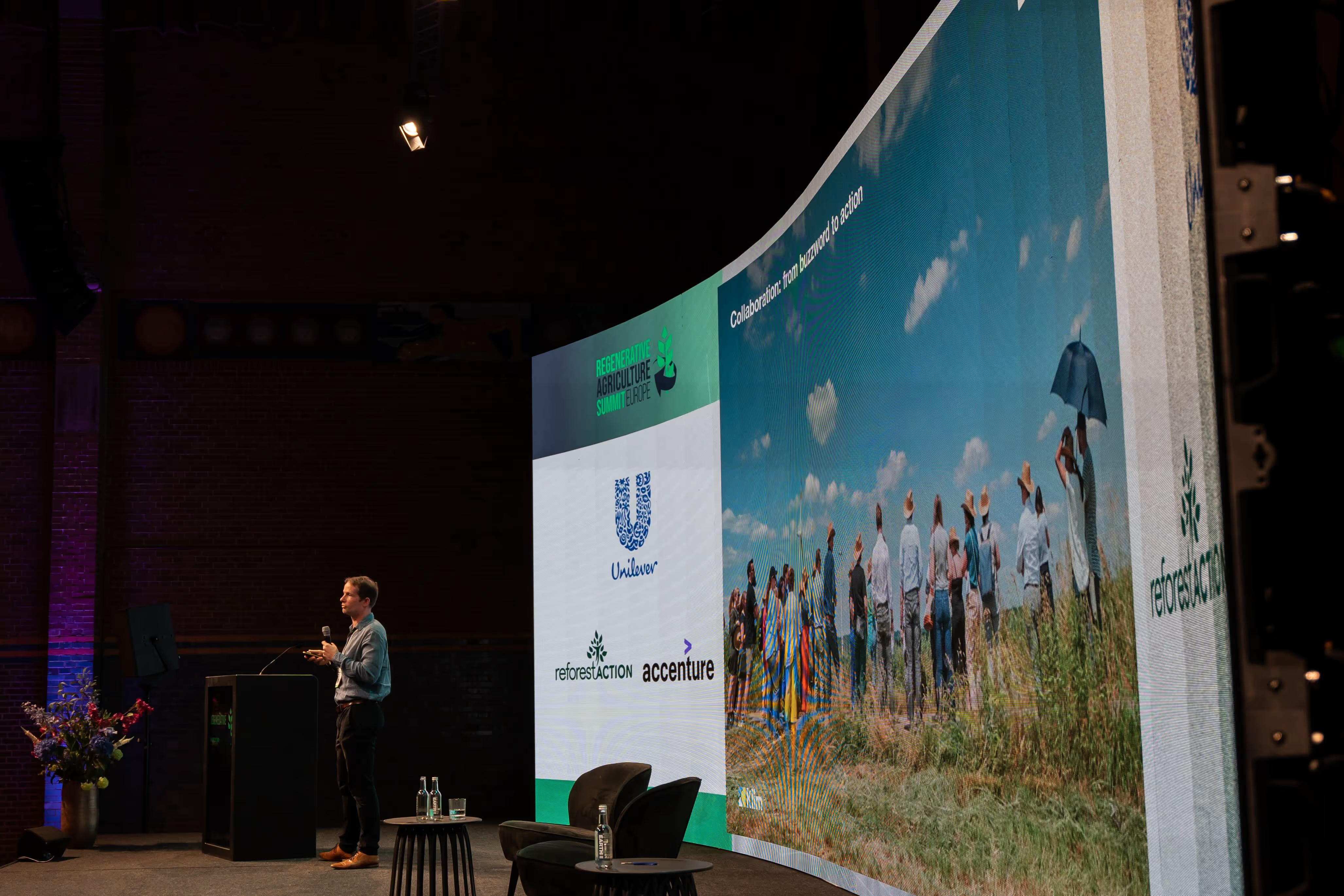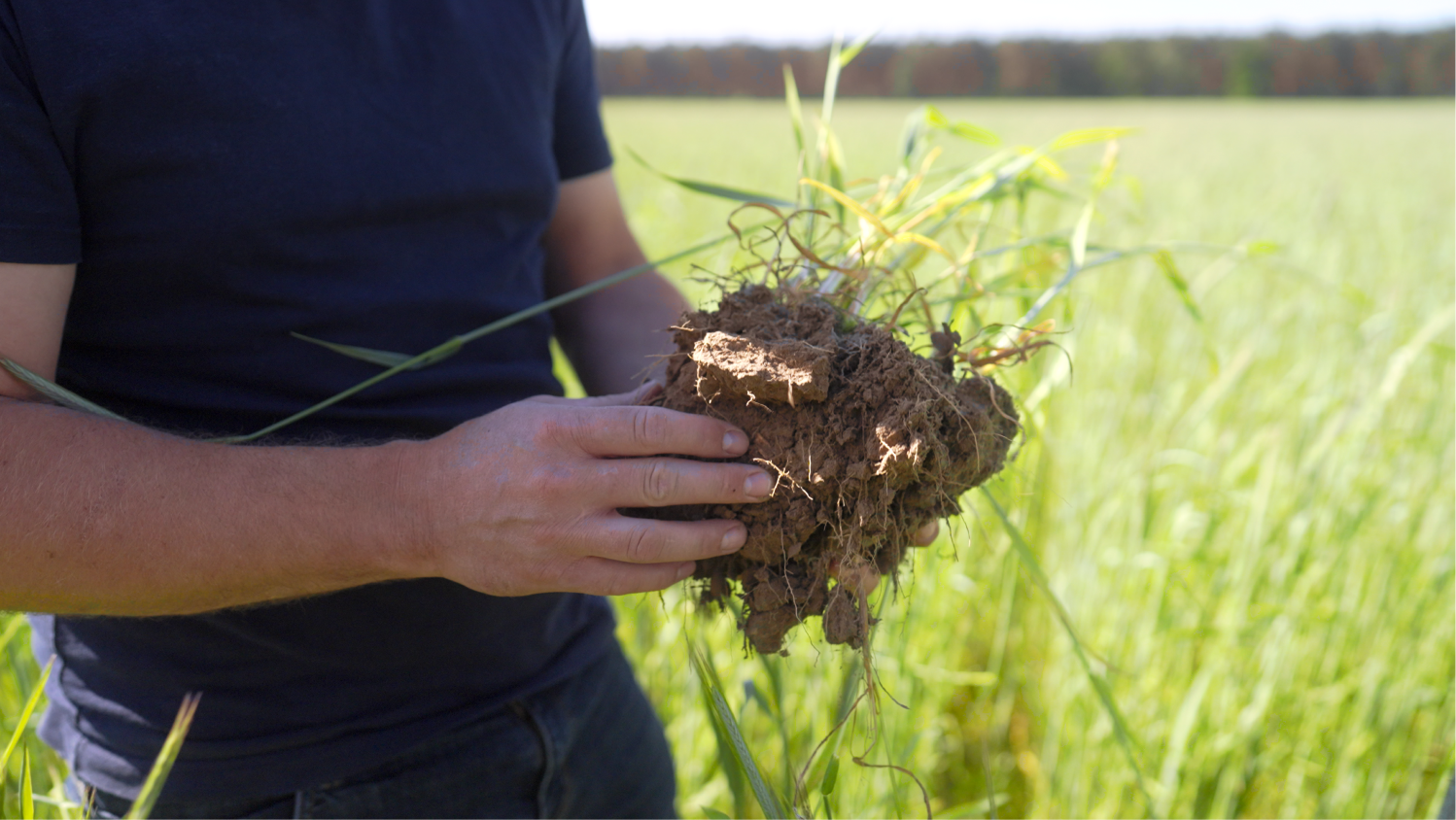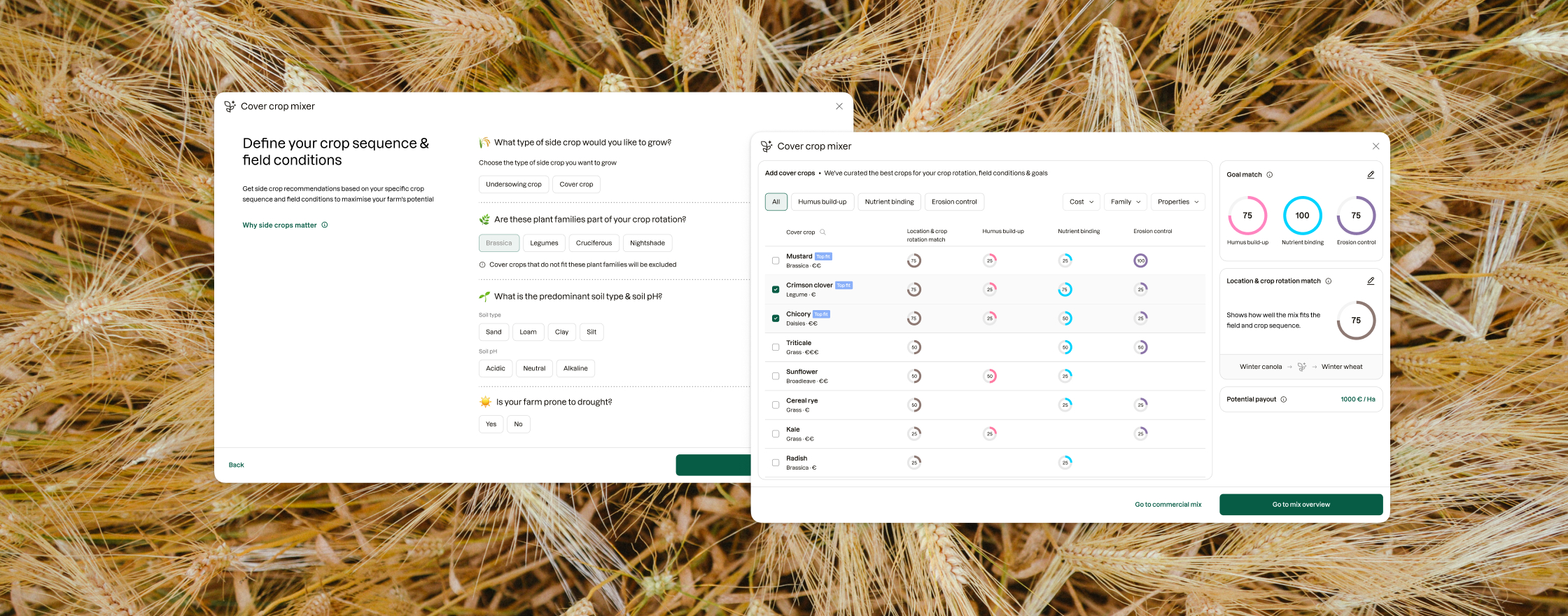
Key messages:
- Regenerative agriculture makes the value chain climate-resilient, creates higher quality products, and meets consumer demand.
- The integration of regenerative agriculture can also encourage investments because investors are increasingly giving preference to companies with positive environmental effects.
- Unilever, PepsiCo, and Walmart, among others, have already the potential of regenerative agriculture discovered.
In recent years, the food industry has faced significant challenges. As global crises threaten supply chain security, the EU and UN have announced ambitious climate goals, and more companies are setting scientifically grounded emissions targets. This makes it increasingly urgent to find innovative solutions. Food companies, investors, and consumers alike want to ensure a reliable supply of products while simultaneously working towards a greener future.
Supply chains in the food industry cannot function without their most essential element: agriculture. Companies spanning dairy farming, wheat cultivation, and vegetable production form the crucial first step in the production process, supplying raw materials that flow through the supply chain to become end products. Moving away from outdated, inefficient, and polluting agricultural practices that degrade soils is essential to reshaping our food production in a resilient and environmentally friendly way.
In the food industry, among farmers and consumers, there is a growing consensus that regenerative agriculture is the future of the agricultural sector. Regenerative agriculture methods hold enormous potential for companies, farmers, and the environment — and the world is taking note of this. The “4 per 1000 Initiative” launched by the French government during the 2015 Paris Climate Summit reaffirms an international vision of healthy soils as the key to fighting climate change through carbon sequestration. [1] The members of the initiative, including 68 countries and many other international companies and non-governmental organisations, farmers' associations, research institutions and private companies, commit to storing carbon in their soils by using regenerative agriculture, pasture and expand land use practices.
Consumers in the food sector also regard agriculture as an important aspect of global sustainability. A report on food trends in 2022, which analysed over 1 million restaurants, 22 billion social interactions and 4 million recipes, revealed that consumers are increasingly interested in the terms “regenerative agriculture” and “carbon footprint” and pay close attention to which brands use sustainable practices and which only claim to be environmentally friendly. [2]
Regenerative agriculture
As a reminder, regenerative agriculture refers to a range of agricultural practices that contribute to the accumulation of humus (fertile upper layer) in soil. These techniques include crop rotation, the use of cover crops, the reduction of soil disturbances, the integration of livestock, and the preservation of roots. On our page on regenerative agriculture, you'll find more details about each of these methods.
“Reports from leading organisations such as FAO, the IPCC and the EAT Forum stress the fundamental importance of the transition to regenerative farming methods if Europe wants to achieve its climate goals, ensure food security, protect its agricultural land and build a healthier food system. ” - European Institute of Innovation and Technology [3]
Regenerative agriculture methods actively store carbon in the soil and have the potential to make agriculture climate-positive, i.e. generate negative carbon emissions through carbon sequestration. This is an extremely significant achievement when you consider that traditional agriculture is currently responsible for around 1/4 of all global emissions.
The extensive literature documents hundreds of long-term field experiments around the world, demonstrating the efficiency and effectiveness of regenerative farming techniques in sequestering carbon. [4] [6] [7] [8] [9] [10] [11] The positive effects of these farming practices on the climate are measurable, consistent, reliable and essential for future yield security.
A more resilient, cost-effective supply chain
Regenerative agriculture helps to increase the climate resilience of value chains, as its practices radically improve soil water storage [12] and soil fertility [13]. This means that farms, and therefore the other players in the supply chain, are better able to deal with climate fluctuations. As adverse weather events such as floods and droughts occur more and more frequently and threaten crop yields, this advantage of regenerative agriculture is particularly important.
Regenerative agriculture also leads to higher quality products — initial research suggests that plants grown using regenerative methods have higher nutritional value [14]. As nutrient density is becoming increasingly important for consumers [15], this is an important additional benefit of regenerative agriculture.
A climate-friendly and strategic solution
Unilever, PepsiCo and Walmart are just a few of the many multinational companies that have come to the same conclusion: Regenerative agriculture has tremendous potential to help companies achieve their emissions targets, secure future-proof supply chains, and meet consumer demand for high-quality products. The integration of regenerative agriculture into the supply chain also ensures the long-term profitability of investments, as investors continue to prefer companies with positive environmental effects.
“Regenerative agriculture is the key to the sustainability of the food sector. ” - EIT Food [16]
Regenerative agriculture is the future and the food industry is already using valuable opportunities to build more resilient, environmentally friendly supply chains. Transforming the agricultural system into one that contributes to supply chain resilience and decarbonisation is an urgent task that now requires decisive action from the food industry. By restoring our soils, we could up to 11 billion tons of CO2 emissions per year store and at the same time increase plant production and increase climate resilience. [17]
What does that look like in practice?
Let's assume that you are the largest producer of ice cream in Germany with a loyal customer base, and with summer approaching, you anticipate a surge in sales. However, recent years have presented challenges: supply chain disruptions and setbacks in achieving ambitious emissions targets have highlighted the need for a new approach. Seeking a creative solution that addresses these issues while ensuring a reliable supply of ice cream for your customers, you decide to incorporate regenerative farming practices into your supply chain. Partnering with Klim, a leader in sustainable agriculture, you work with your suppliers to introduce the Klim app to your dairy farmers, helping them adopt regenerative practices within your value chain. Through the app, farmers document their progress, and Klim digitally quantifies and verifies their positive impact on carbon storage. This strategy not only strengthens the resilience of your supply chain but also fosters loyalty among your farmers, ultimately making your value chain more sustainable and future-proof.
sources: [1], [2], [3] original quote in English, [4], [5], [6], [7], [8], [9], [10], [11], [12], [13], [14], [15], [16] original quote in English, [17]










%20(5).avif)



%20(1).avif)

%20(3).png)
%20(7).avif)

%20(4).avif)



%201.png)